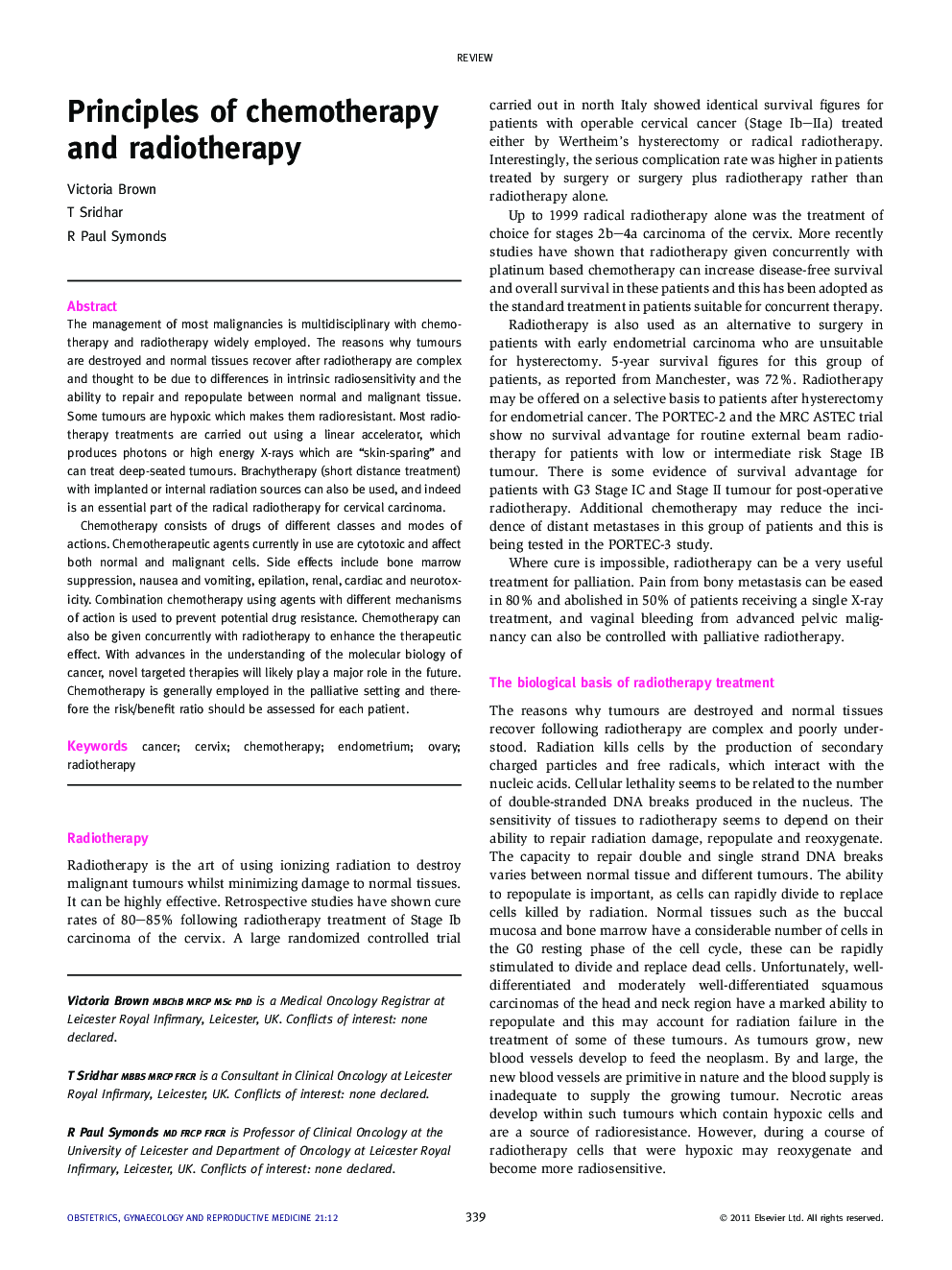| Article ID | Journal | Published Year | Pages | File Type |
|---|---|---|---|---|
| 3966885 | Obstetrics, Gynaecology & Reproductive Medicine | 2011 | 7 Pages |
The management of most malignancies is multidisciplinary with chemotherapy and radiotherapy widely employed. The reasons why tumours are destroyed and normal tissues recover after radiotherapy are complex and thought to be due to differences in intrinsic radiosensitivity and the ability to repair and repopulate between normal and malignant tissue. Some tumours are hypoxic which makes them radioresistant. Most radiotherapy treatments are carried out using a linear accelerator, which produces photons or high energy X-rays which are “skin-sparing” and can treat deep-seated tumours. Brachytherapy (short distance treatment) with implanted or internal radiation sources can also be used, and indeed is an essential part of the radical radiotherapy for cervical carcinoma.Chemotherapy consists of drugs of different classes and modes of actions. Chemotherapeutic agents currently in use are cytotoxic and affect both normal and malignant cells. Side effects include bone marrow suppression, nausea and vomiting, epilation, renal, cardiac and neurotoxicity. Combination chemotherapy using agents with different mechanisms of action is used to prevent potential drug resistance. Chemotherapy can also be given concurrently with radiotherapy to enhance the therapeutic effect. With advances in the understanding of the molecular biology of cancer, novel targeted therapies will likely play a major role in the future. Chemotherapy is generally employed in the palliative setting and therefore the risk/benefit ratio should be assessed for each patient.
